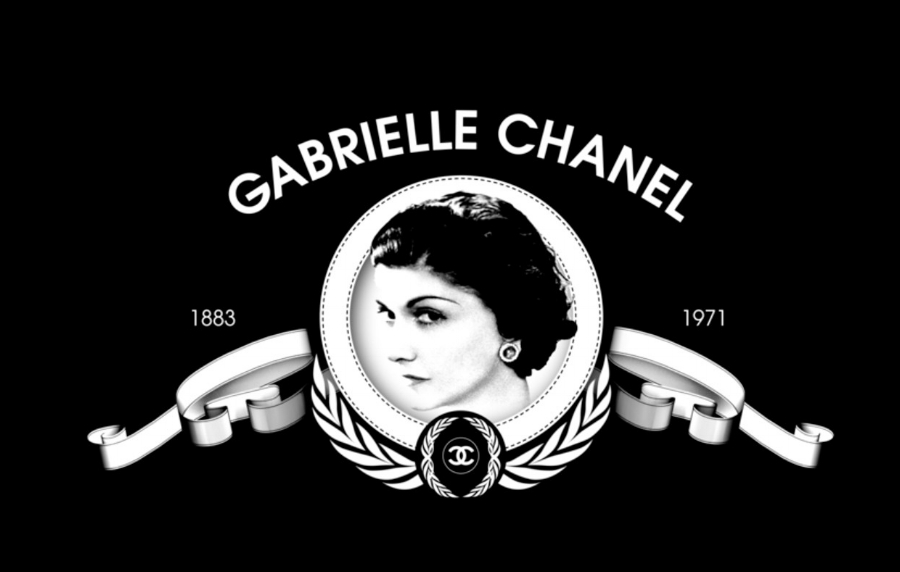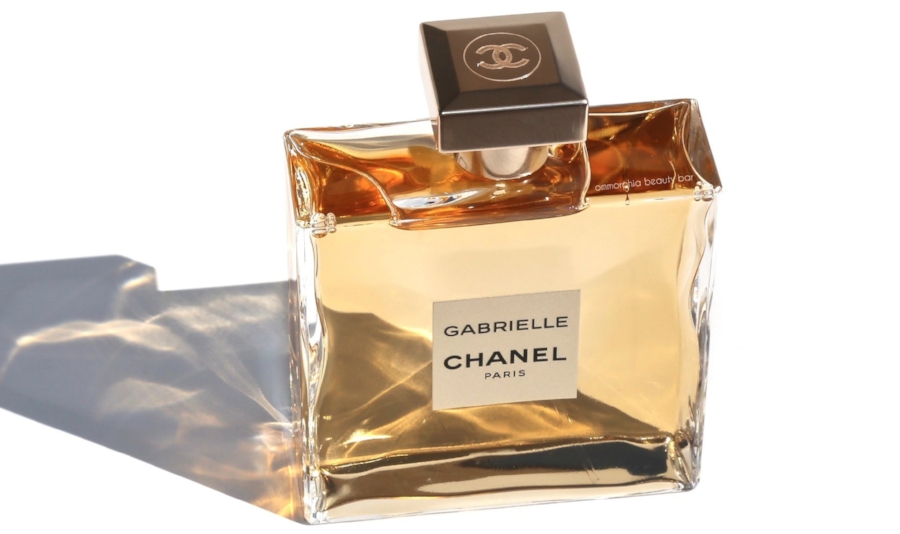
image: Chanel
This summer, Chanel released its first new fragrance in 15 years. The perfume, entitled, Gabrielle, is named after the brand’s eponymous founder, a reference, according to Chanel, to “a rebel at heart, a woman who freed herself to become the woman she wanted to be.” The Paris-based brand, which was founded in 1909, was the brainchild of Gabrielle Bonheur “Coco” Chanel, an inexperienced entrepreneur-turned-designer hailed for liberating women from the constraints of the constrained silhouette of the corset and popularizing a more nonchalant standard of style.
In the 100+ years since Ms. Chanel – who died in 1971 – set up shop, her brand has become a pinnacle of luxury, a globally recognized marque, coveted by fashion insiders and fans on the periphery of the industry, alike. The launch and promotion of Chanel’s latest fragrance, which follows in the footsteps of No. 5, No. 19, Allure, Coco Mademoiselle, and Chance, among others, “references Chanel’s rebellious nature in a bid to attract new millennial devotees,” as noted by Leigh Morland, a management professor at the University of Huddersfield.
Coco Chanel – whose image and likeness is identifiable outside of the hallowed walls of the fashion industry and whose famed quotes appear in the social media bio lines of many a millennial fashion fan – has “been front and center of the story” of Chanel, says Morland, as has her “ability to spot market opportunities and then align fashion and fragrances with emerging lifestyle trends.”
What might be of particular interest in a time of “wokeness” in the fashion industry and beyond, however, is what is frequently excluded from the narrative of Coco Chanel and the brand she built: Ms. Chanel’s direct ties to the Nazi party, including her special agent code name and number (“Westminster,” a reference to her relationship with the Duke of Westminster, and F-7124), and secret agent-recruiting missions on behalf of Schutzstaffel, a major Hitler/Nazi paramilitary organization, during the time of World War II.
Also rarely – if ever – a topic of discussion when it comes to Ms. Chanel’s back story: Her attempt to bank on the Nazi manipulation – or “Aryanization” – of German law to regain exclusive control of her brand from majority owner Pierre Wertheimer, who held a 90 percent ownership stake in Chanel, in exchange for funds for Chanel to expand the reach and operations of her brand.
As set forth by Haaretz (and before that, by Max Lakin this summer, writing for Racked), “When the Vichy regime ordered the transfer of Jewish-owned business to French-Aryan hands, Chanel realized that she could take back control of the company.” Wertheimer – who was Jewish – “had fled to America to avoid the Nazi regime and Chanel thought that she had her opening.” So, on May 15, 1941, Chanel penned a letter to Nazi party officials, making a case for her reinstatement as the majority owner of Chanel.
In that letter, Chanel stated, “Chanel is still the property of Jews … and has been legally ‘abandoned’ by the owners. I have an indisputable right of priority. The profits that I have received from my creations since the foundation of this business … are disproportionate.”
Ms. Chanel’s efforts were unsuccessful, as what she did not know was that Wertheimer transferred his ownership stake in the brand to a non-Jewish friend, Felix Amiot, just days before the Nazi army occupied Paris, and he fled to New York.
Not a Secret
The full extent of Coco’s Nazi ties may not be inherently common knowledge, at least in part because Ms. Chanel never publicly commented on or explained her wartime activities, refusing to answer questions on the subject. Unwanted attention was further suppressed after the conclusion of WWII when the Wertheimers opted out of taking legal action in order to oust her from the brand, as an ugly legal battle would undoubtedly tarnish the brand’s already delicate image.

image: Chanel
Fast forward over 65 years and a handful of articles are published every once in awhile by mainstream publications detailing Chanel’s Nazi ties. Racked, the New Yorker, and the New York Times have all documented it to an extent, and documentaries and books – such as French language documentary L’Ombre D’un Doute: Paris and Les Artistes sous l’Occupation, the very recently-released No. 5 War, and Hal Vaughan’s Sleeping With the Enemy: Coco Chanel’s Secret War, which “offer convincing evidence that she was also a Nazi intelligence operative and an incorrigible anti-Semite,” as James McAuley wrote for the New Yorker in 2011 – have made the rounds.
As the San Francisco Chronicle’s David D’Arcy wrote in his review of Sleeping With the Enemy, an international best-seller released in 2012, “Chanel’s war years, as explored by Hal Vaughan, are as camera-ready and as neck-deep in melodrama as Quentin Tarantino’s ‘Inglourious Basterds,’ and just as hard to forget now that they’re exposed.”
And yet, despite such increased awareness on a mainstream level, Chanel, the brand, has managed to sidestep and keep at bay this not-so-spectacular aspect of its history, in the eyes of most consumers, at least. There is no shortage, after all, of shoppers willing to shell out $5,300+ for a Medium/Large Classic Flap Bag (one of the few handbags that manages to hold its value remarkably well year after year) or even more for its tweed skirt suits.
At the more accessible end of the spectrum, consumers consistently stock up on the brand’s iconic fragrances and other cosmetics seemingly without so much as an afterthought as to the house’s problematic roots, a testament to Chanel’s Olivia Pope-esque “handling” of the situation dating back half a century.
How, exactly, is this possible, you ask? How did a house with the fashion industry’s most significant Nazi ties manage to not only skirt the potential indelible damage of such an atrocity but to thrive nonetheless? (Note: Hugo Boss, Louis Vuitton, Christian Dior, and Balenciaga also maintained some Nazi-related connections around the time of WWII).
Well, as Lakin so aptly stated, “That Chanel could escape this blemish so quickly and nearly so completely was not an anomaly.” He cited McAuley’s review of Vaughan’s book, stating: “By 1954 [some 9 years after the liberation of the Auschwitz camp complex, the death of Adolf Hitler, the dissolution of the Third Reich (or the Nazi state), and the conclusion of World War II], most French people didn’t give a damn about who collaborated [with the Nazis] and who didn’t.”
It is also worth considering that Chanel’s Nazi allegiance may have been normalized to an extent. As set forth by theFashionSpot, “During the Nazi occupation of France, which began in 1940, designers were often forced either to collaborate with the Nazis, who saw immense value in the French fashion industry, and even considered relocating it to Vienna or Berlin, or close their doors. For instance, before Hugo Boss A.G. became known for classic men’s suits and flashy ties, the clothing manufacturer made uniforms for the Nazi regime.
Moreover, according to Stephane Benhamou, the maker of Chanel-related The No. 5 War documentary, many French firms were, in fact, accused of collaboration with the Germans, thereby, enabling Coco Chanel to very publicly reclaim the helm of her house following the end of the war.
Paired with this, the viability and reinvention, to some extent, of the Chanel brand post-WWII was a product of careful – and very selective – branding decisions. On the heels of her return to Paris, having fled to Switzerland and escaped legal liability on more than one occasion for her Nazi involvement (reportedly due to her having friends in high places), Chanel – the brand and the woman behind it – went into marketing rehabilitation overdrive that stretched beyond France to the states.
As McAuley wrote in a separate article for Tablet, “At the time, [Chanel] desperately needed to dispel the shame of her anti-Semitic, collaborationist wartime activities in occupied France,” and one such effort included a trip to Dallas, Texas upon invitation from Neiman Marcus chief, Stanley Marcus.
“The unspoken bargain between them,” per McAuley, “was this: Chanel would receive one of Neiman Marcus’ annual Distinguished Service in the Field of Fashion Awards and all the sales that would inevitably follow, and Neiman Marcus would receive a state visit from fashion’s dowager queen.”
“When [Coco] Chanel finally did arrive in Dallas on Sept. 9, 1957, she smiled for the cameras. She was there to sell.”
Marcus – a Jewish man – lauded Chanel in presenting her with the prestigious award, one that managed to get Christian Dior, Yves Saint Laurent, and others to travel “to a small city in north Texas where the steakhouse was still the epitome of haute cuisine,” per McAuley.
As Marcus told a crowd of dedicated clients, media, and special guests, Coco Chanel “revolutionized women’s fashion.” She is “the great innovator who emancipated the feminine silhouette … who elevated the status of costume jewelry to a position of fashionable respectability, who was the first to bring perfume from the chemist’s shop to the couturier’s boutique, who was never afraid of being copied, whose past accomplishments have had a tremendous influence on present fashions.”
All was as much as forgotten by Dallas’ elites and the press, alike. “The publicity from these awards generated significant enough national attention,” per McAuley. Mademoiselle Chanel, the Dallas Morning News declared, was nothing short of “a legend in her own time.”
Chanel’s pricey suits flew off the racks at Neiman Marcus directly thereafter.
During his press tour for Sleeping With the Enemy, Vaughan, not terribly unlike the women of Dallas, was willing to overlook Ms. Chanel’s wartime activities. Speaking out about Coco, he told McAuley, “She didn’t kill anybody; she didn’t torture anybody.”
As for McAuley, in his attempt to piece together Coco Chanel’s reinvention, he wrote: “Let’s not forget that Chanel was also tremendously talented.” And it is precisely here that Chanel has opted to place its bets, of course.
The “fun fact,” according to Lakin, that Ms. Chanel was an actual Nazi simply “doesn’t look as good on a billboard” as an idealized, beautified version. So, Chanel has spent decades “elid[ing] an uncomfortable history in favor of a sanitized one, and enjoying “a narrative that only exists as a result of a strained and willful gloss of the more unsavory aspects of her life,” wrote Lakin.
In short: Chanel changed the narrative. Instead of allowing its founder’s Nazi ties to ever dictate the storyline, the brand’s marketers acted fast – and consistently – to ensure that Coco Chanel was depicted as “a genuine icon, a highly-esteemed woman who for many represents a model of female independence, success and good taste,” as Haaretz put it last year.
Revisiting Morland’s take on Chanel and its choice to release a fragrance celebrating its founder, she writes, “If entrepreneurship is a matter of seeing and exploiting opportunities, then Chanel fits the bill.” And with the foregoing in mind, Chanel – the woman and the brand – fits this bill in more ways than one. Aside from Coco being an entrepreneur known for “her talent for creativity within constraints,” particularly limited financial assets from the outset, per Morland, the brand has undoubtedly proven itself to be a master in marketing (for better or worse).
Its success in this endeavor is the precise reason why Benhamou says he was compelled to make “The No. 5 War,” which made its debut at the Jerusalem Jewish Film Festival in December. “The hiding of this part of history for commercial reasons,” he says, is “intolerable.”







